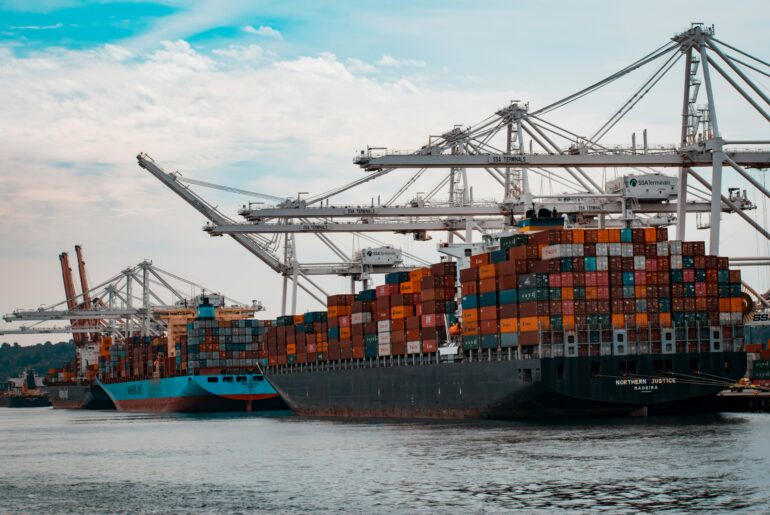Table of Contents
What is Procurement?
Procurement is the process of sourcing, acquiring and paying for goods and services for business operations. The business’s internal procurement team procures these goods and services from external vendors.
It’s important that the procurement process is as optimised and cost-effective as possible. Businesses with smooth procurement processes will likely be more profitable since a sizeable chunk of the budget goes towards procurement.
In most businesses, the Procurement or the Accounts Payable department takes care of the procurement process. AP or Procurement Managers are responsible for receiving vendor requests across departments, scouting and selecting the best suppliers, and managing invoice payments and compliances.
Here’s how India’s top tech businesses are automating their procurement processes.
Procurement Process
The procurement process involves the processing of requests for goods or services, the receipt of invoices and payment.It starts with planning and budgeting, researching suppliers, financing, negotiating prices and terms, managing invoices and inventory, and finally approving payment and reconciling books of accounts.
It involves multiple stakeholders, cross-functional approvals, paperwork, and compliance requirements.
Procurement processes are defined by organizational policies around sourcing, budgeting, approvals, payments, compliance, etc. Without powerful procurement management software, the process is prone to mistakes and delays. Today, businesses automate their AP process with tools like RazorpayX Source to Pay.
These tools help businesses manage their entire procurement process in one place. Equipped with features like vendor portals and automations, RazorpayX Source to Pay significantly simplifies the procure-to-pay process.
Learn more about automating your procurement process.
Why is Procurement Important?
Procurement acts as the backbone of a healthy business, influencing its financial well-being and operational efficiency in several key ways. Firstly, it ensures value for money. Procurement specialists can secure the best possible prices and terms by strategically sourcing goods and services, negotiating effectively, and managing supplier relationships. This translates to cost savings, improved cash flow, and a healthier bottom line.
Secondly, procurement plays a vital role in risk management. Procurement teams can mitigate potential disruptions through careful supplier evaluation, diversification of sources, and establishing clear quality standards. This includes guarding against issues like supplier insolvency, price fluctuations, or unexpected delays—all of which can significantly impact operations.
Finally, fostering strong supplier relationships is a cornerstone of effective procurement. By working collaboratively with reliable and high-performing suppliers, businesses can unlock opportunities for innovation, access to new technologies, and even secure better pricing through long-term partnerships. This collaborative approach ensures a smooth supply chain and strengthens the foundation for the company’s continued success.
Read more: Procurement Analytics
10 Steps in the Procurement Process
- Need Identification: A department identifies a need for a good, service, or subscription. (e.g., marketing team needing a social media analytics tool)
- Purchase Request: The department submits a formal request to the procurement team with details and budget.
- Request for Quote (RFQ): Procurement sends an RFQ to shortlisted vendors, requesting price quotes for the specified needs.
- Supplier Selection & Negotiation: Procurement evaluates quotes, negotiates terms, and selects the best vendor.
- Master Service Agreement (MSA): A legal document outlining the terms and conditions between the business and the chosen vendor is drafted (may involve legal teams).
- Purchase Order (PO): The AP team creates a PO outlining the order details and sends it for approval by relevant stakeholders (requesting department, finance, procurement).
- Order Fulfillment: Upon PO approval, the supplier receives the order, processes it, and begins work on the requested goods/services.
- Goods/Services Delivery: The goods/services are delivered along with a Goods Receipt Note (GRN).
- Delivery Verification: Procurement and requesting departments verify the delivered items against the GRN. Any discrepancies may lead to replacements or refunds.
- Invoice & Payment: The vendor sends an invoice for payment. The procurement team performs a 3-way match (PO-GRN-invoice) for verification. Finally, the finance team initiates payment after ensuring compliance and tax deductions.
Stages of Procurement
There are three major stages in the procurement process:
- Sourcing: In this stage, departments or functions come up with a request and route the request to the procurement department. The procurement department proceeds with assessing vendors and sourcing the goods or services required.
- Purchasing: Sourcing is followed by negotiating prices and terms and placing the order with the vendor.
- Payment: The final stage involves 3-way matching between the GRN, PO and Invoice before making the final payment to the vendor and reconciling with the books of accounts.
Importance of Automating Procurement
Procurement processes are weighed down by tedious tasks, multiple stakeholders across departments, differing timelines, paperwork and compliances. An automated procurement process takes over all these boring, repetitive tasks like paperwork and managing approvals, leaving strategic work like deal negotiation to the humans.
- Faster flow: Automated processes are significantly faster – it turns slow, manual slog into a smooth, efficient machine. Paperwork and projects stay on track with timelines, keeping business running smoothly.
- No errors: Robots don’t make mistakes – all automated processes are reliable and accurate, eliminating the possibility of lost invoices or surprise bills.
- Data-driven insights: Automation means the process is fully digitized – valuable data can be collected every step of the way. This data can be turned into powerful insights to help teams find better deals, avoid bad suppliers and save money.
Procurement Life Cycle
The process of procurement can be thought of as a lifecycle since it is a continuous, recurring process. The business constantly needs goods and services to function – as soon as one need is fulfilled, another need arises.
The completion of a procurement cycle doesn’t mark a true end. The data and experience gained from each cycle inform future procurement decisions and feed back into the beginning of the process, creating a continuous loop.
The procurement lifecycle begins with identifying a specific need, followed by fulfilling that need through vendors or suppliers, making the payment to the vendor and reconciling the transaction.
Throughout this lifecycle, meticulous record-keeping is essential for maintaining a transparent and auditable procurement trail.
Procurement, Purchasing, Supply Chain and Sourcing
Procurement vs Purchasing: Procurement is the larger process of identifying needs and negotiating contracts to manage supplier relationships. Purchasing involves a specific focus on tasks like issuing purchase orders, processing invoices, and ensuring smooth communication with vendors.
Procurement vs Sourcing: Sourcing is a step within the larger process of procurement that focuses on finding and vetting potential suppliers for the required goods or services.
Procurement vs Supply Chain: Supply chain management is the process of coordinating logistics, inventory and warehousing, delivery and other functions that ensure that the procured goods are delivered to the end user.
Related Read: What Is the Difference Between Inbound and Outbound Logistics?
Types of Procurement
Procurement can be categorized based on the purpose of the goods or services being procured.
- Direct procurement: This refers to the acquisition of goods and services that are directly used in the production of the final product or service offered by the business. For example, a a manufacturer of bicycles would procure raw materials like steel and rubber, as well as components like wheels and gears, through direct procurement.
- Indirect procurement: This involves the purchase of goods and services that are not directly used in the production of the final product or service but are essential for the day-to-day operations of the organization. Examples of indirect procurement include office supplies, IT equipment, janitorial services, and marketing materials.
- Services procurement: Encompasses the acquisition of professional services from external providers. This can include a wide range of services, such as legal advice, accounting services, security services, and market research.
In addition to these, procurement can also be categorized in other ways.
- By the method of purchasing: This can include open tenders, closed tenders, and negotiated contracts.
- By the source of supply: This can include domestic procurement, international procurement, and e-procurement.
- By the value of the purchase: This can be classified as small, medium, or large value procurement.
How RazorpayX Source to Pay Helped Cellbell Optimize Procurement Process
Cellbell is a fast-growing furniture marketplace that shot up to popularity after their appearance on Shark Tank. Their product was top-quality, the customer service was top-notch and the customers were happy.
But on the inside, it was getting tougher to manage multiple vendors, complex financial operations – cumbersome workflows were threatening vendor and investor relationships.
Enter RazorpayX.
With automations, integrations and super-smooth dashboards, the RazorpayX Business Banking suite brought instant clarity to Cellbell financial processes.
With the Source to Pay vendor management solution, Cellbell was able to pay their vendors before time, improving cash flow and financial stability.
Read more about how RazorpayX optimized Cellbell’s finances here.
Procurement vs Purchasing
| Feature | Purchasing | Procurement |
| Focus | Transactional – acquiring goods/services at right price/quality | Strategic – creating value through acquisition |
| Activities | Ordering, expediting, receiving, paying | Identifying needs, selecting suppliers, negotiating contracts, managing relationships, optimizing costs |
| Scope | Narrow – individual transactions | Broad – entire lifecycle of sourcing & managing |
| Decision-making | Less strategic – immediate needs & budgets | Strategic – long-term goals, risk management, supplier performance |
| Time horizon | Short-term | Long-term |
| Risk management | Limited | Strategic focus on mitigation |
| Technology use | Basic | Sophisticated tools & data analysis |
FAQs
What are the stages of procurement?
The stages of procurement are as follows: need identification, sourcing, negotiation & contracting, order fulfillment, payment & invoice.
How to optimize the procurement process?
Using technology and software to automate repetitive tasks like PO generation, invoice processing and data entry is one way to optimize the procurement process.
Who is a procurement manager?
A procurement manager is responsible for overseeing and managing the entire procurement process within the business. They typically deal with identifying and defining procurement needs, sourcing suppliers, negotiating suppliers, and managing vendor relationships.
What are procurement documents?
Several essential documents are used throughout the procurement process including purchase requisitions, request for quotation, purchase order, invoice and contract.
What are the types of PO?
There are several types of POs including standard PO, blanket PO, contract PO and rush PO. Each type of purchase order has different uses and timelines.
What is an invoice in procurement?
An invoice is a document sent by the supplier to the buyer after the goods/services have been delivered or performed. It details the cost of the goods/services, payment terms, and any relevant information like delivery details or invoice due date.
How does procurement work?
Procurement is the process of receiving request for goods and services for business operations, sourcing vendors, negotiating terms, placing orders and paying vendors.
Read more





